Baby Bear Cries Before Being Reunited with Mom
Baby Bear Cries before being reunited with Mom
Bears are carnivoran mammals of the family Ursidae (/ˈɜːrsɪdiː, -daɪ/). They are classified as caniforms, or doglike carnivorans. Although only eight species of bears are extant, they are widespread, appearing in a wide variety of habitats throughout most of the Northern Hemisphere and partially in the Southern Hemisphere. Bears are found on the continents of North America, South America, and Eurasia. Common characteristics of modern bears include large bodies with stocky legs, long snouts, small rounded ears, shaggy hair, plantigrade paws with five nonretractile claws, and short tails.
The mating system of bears has variously been described as a form of polygyny, promiscuity and serial monogamy. During the breeding season, males take notice of females in their vicinity and females become more tolerant of males. A male bear may visit a female continuously over a period of several days or weeks, depending on the species, to test her reproductive state. During this time period, males try to prevent rivals from interacting with their mate. Courtship may be brief, although in some Asian species, courting pairs may engage in wrestling, hugging, mock fighting and vocalizing. Ovulation is induced by mating, which can last up to 30 minutes depending on the species.
Gestation typically lasts 6–9 months, including delayed implantation, and litter size numbers up to four cubs. Giant pandas may give birth to twins but they can only suckle one young and the other is left to die. In northern living species, birth takes place during winter dormancy. Cubs are born blind and helpless with at most a thin layer of hair, relying on their mother for warmth. The milk of the female bear is rich in fat and antibodies and cubs may suckle for up to a year after they are born. By 2–3 months, cubs can follow their mother outside the den. They usually follow her on foot, but sloth bear cubs may ride on their mother's back. Male bears play no role in raising young. Infanticide, where an adult male kills the cubs of another, has been recorded in polar bears, brown bears and American black bears but not in other species. Males kill young to bring the female into estrus Cubs may flee and the mother defends them even at the cost of her life.
In some species, offspring may become independent around the next spring, though some may stay until the female successfully mates again. Bears reach sexual maturity shortly after they disperse; at around 3–6 years depending on the species. Male Alaskan brown bears and polar bears may continue to grow until they are 11 years old.[101] Lifespan may also vary between species. The brown bear can live an average of 25 years.
Enjoy the video? More Animal Videos Here
https://rumble.com/playlists/LfbbQ3K-V2c
-
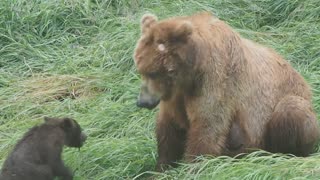 1:42
1:42
F5Tornado
2 months agoBrown Bear Cubs Playing With Mommy
1.87K4 -
 0:13
0:13
Life on Ice
2 months agomother bear and her cub
74 -
 3:38
3:38
My NH Backyard
2 years agoMama Bear and cubs get my birdfeeder.
5 -
 0:56
0:56
Dixie Ziemba
2 months agoThe Many Faces of Bears
41 -
 1:24
1:24
EmotionsofAfrica
1 month ago $13.81 earnedAdorable moments between mother leopard and her playful cub in the wild
2131 -
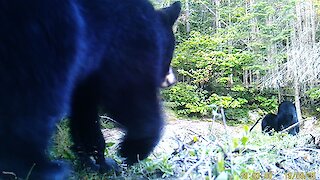 0:30
0:30
WildCreatures
4 years ago $18.43 earnedBear cub swipes at trail camera before following mom & brother
2.12K1 -
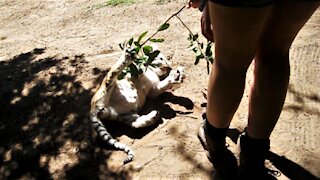 0:45
0:45
NataliaCara
3 years agoGolden tiger cub plays with caretaker in adorably precious manner
6.18K14 -
 0:45
0:45
RT
3 months agoBaby panda learns to stand on her two legs in Moscow Zoo
4.51K7 -
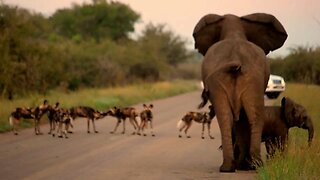 1:13
1:13
EmotionsofAfrica
2 months ago $86.56 earnedMother elephant protects baby from dangerous African wild dog
6701 -
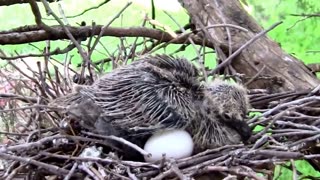 2:52
2:52
Observing Nature
1 month ago $0.66 earnedBaby Eurasian Collared Dove Every Day, From Egg to Leaving The Nest
1972